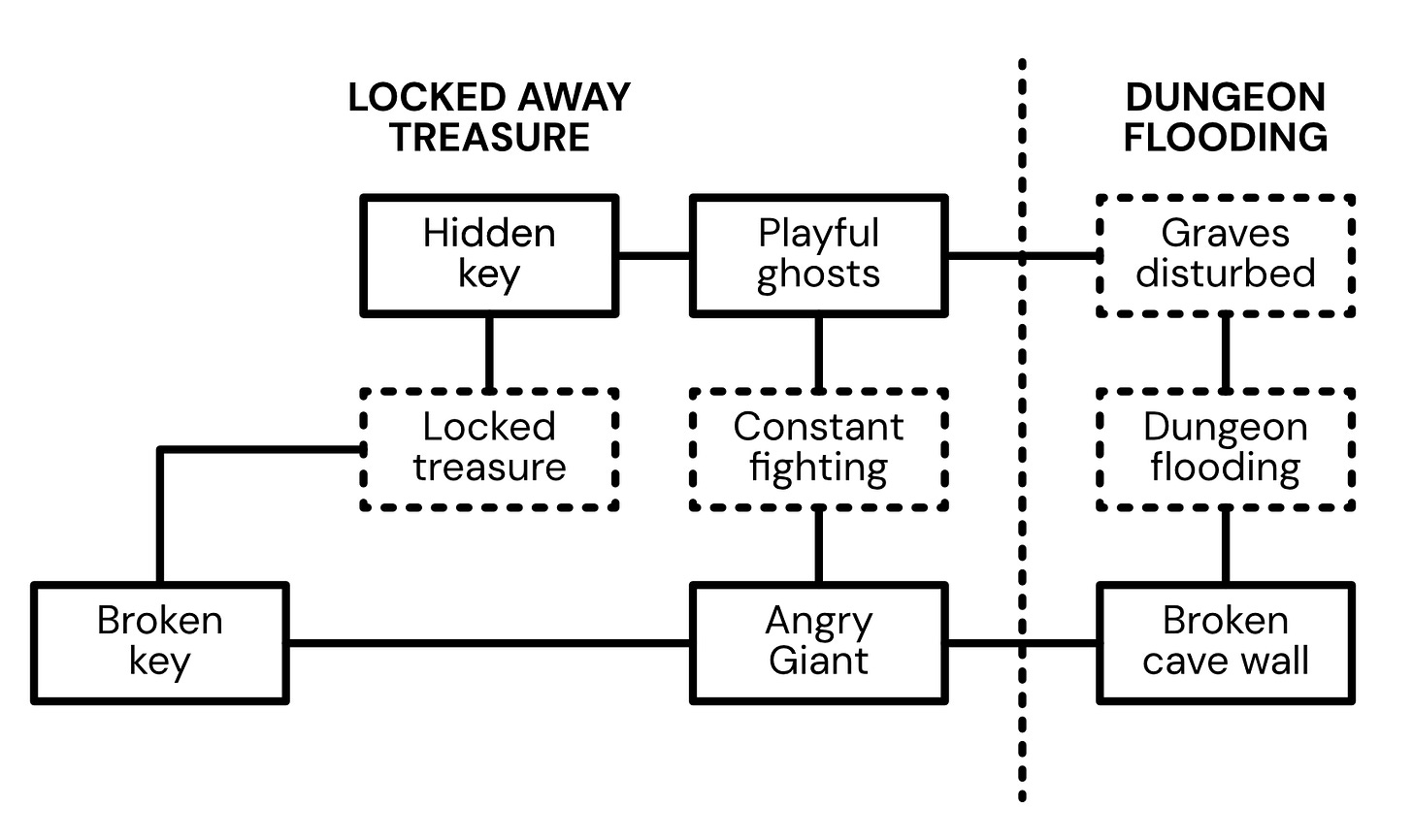Hyperclusters
Stitching cluster design together
This article contains affiliate links, meaning I get a commission if you make purchases using these links, at no cost to you.I talked about cluster design in my dungeon stocking overhaul. In short: when we design a scenario, we design the components in clusters - e.g. you design 4 of the rooms in a dungeon to be related to each other.
These clusters create self-contained mini-scenarios that achieve moment to moment density and interest. But what if we want to have a way to generate this kind of connectivity on the ‘big picture level’, where the scenario as a whole has strong connectivity. Is there a consistent method we can use?
We can make hyperclusters. This is a tool that can help us work towards the interconnectivity we see in some of the best adventures, like Deep Carbon Observatory or A Pound of Flesh.
Disclaimer: this is going to start pretty abstract, but there’s a detailed example that follows so stick with me.
The recipe
To plan big the picture without it being a railroad, we break it down into simple causes and effects and knit them together using diagrams.
Decide how many hyperclusters (big situations) you want. Roll a d4+1 to generate the number if you’re unsure.
For each hypercluster, roll a d4 for both causes and effects to determine how many of each there will be.
Within each hypercluster, connect the causes and effects together. For each cause and effect, roll a d3 - that’s how many causes and effects it’s linked to. Connect them up. If a cause/effect already has connections, only add more connections if you beat its current number of connections with your die roll.
Decide what the causes and effects will be within each hypercluster.
Connect the hyperclusters together. Link some of the causes and effects across clusters as makes sense. Introduce new causes and effects in play if it makes sense.
That was pretty abstract. Let’s see an example.
Example
Let’s do a simple dungeon example with two hyperclusters. Causes are solid bordered, effects are dashed, a dashed line separates the two hyperclusters.
The first cluster is about treasure being locked away. Two keys are needed to unlock it. One of the keys has been hidden by some playful ghosts. The other was broken by an angry giant. We also note that these two factions are in constant conflict.
The second cluster is simpler. The dungeon is flooding due to a broken cave wall, which in turn is disturbing graves in the dungeon. We connect the two clusters together by saying the giant broke the cave wall and the disturbed graves are responsible for the ghosts.
Now we can go into each of these causes and effects and make regular clusters centred around that cause and effect. See my dungeon stocking overhaul for instructions on how to do this. For a dungeon, they can be rooms. For overland, they can be hexes. For a social scenario in a city, they can be NPCs - and so on.
You can use the hypercluster to inform encounter table design or timelines of how the situation could change.
This is the kind of design intent you see in great adventures, like Joseph R Lewis’ works (my favourite is the Witches of Frostwyck).
Going further
This is a simple dungeon. We could have this dungeon be a cause or effect in another level of hyperclusters that stretch across a whole sandbox. Perhaps the contents of the treasure vault is an item that can be used to stop a wizard who is causing havoc.
You can update hyperclusters as situations change and evolve as well - strike off or update causes and effects as players take action. In the example above, maybe players resolve the faction conflict, so you can remove ‘constant fighting’.
This recipe can seriously up your game. Give it a whirl.





Also feels like you could apply this with various levels of abstraction. Districts in a city, kingdoms in a region, etc.
Nice, wondering how I could use this for Soloplay. Probably leave it empty and use random tables to determine the contents. Worth experimenting with